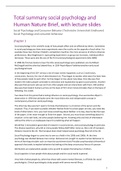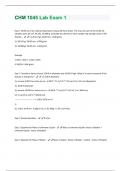Summary
total summary of the book social psychology and human nature
- Course
- Institution
- Book
this document entails a total summary of the book social psychology and human nature, which is used at the course 0Hv30 social psychology and consumer behavior.
[Show more]













